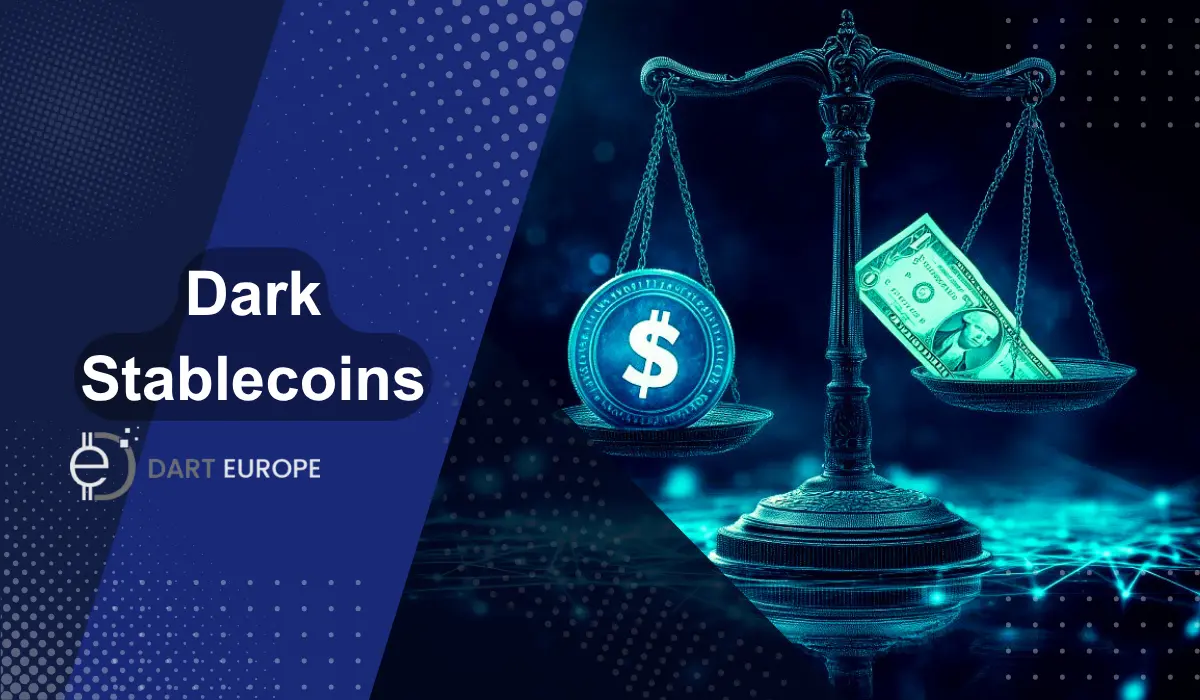In a recent X post, Ki Young Ju, the CEO of crypto analytics firm CryptoQuant, warned that government oversight of the crypto industry, especially fiat-backed stablecoins, has increased demand for censorship-resistant “dark stablecoins”.
Regulatory Compliance Could Give Birth To Censorship-Resistant “Dark Stablecoins”
Typically, governments have only interfered with stablecoins when tackling money laundering operations. However, he predicted that in the near future, any stablecoin issued by a country could face strict government regulation, similar to traditional banks, with their use automatically triggering tax collection through smart contracts, and user wallets being frozen or requiring paperwork based on financial compliance to operate.
Young noted that those who use stablecoins for “big international transfers” might start looking for censorship-resistant alternatives instead.
Unlike Bitcoin, which was designed from the ground up to be resistant to government censorship, stablecoins require centralized agents to bridge between digital and traditional finance systems.
The CryptoQuant executive stated that stablecoins like Tether USD (USDT) and Circle USD (USDC) have operated with limited government interference and have served as a haven for people in jurisdictions where cryptocurrencies are banned or heavily regulated.
Since Donald Trump assumed office as US President, lawmakers have been weighing stablecoin legislation, seeking to regulate stablecoins issued in the country to ensure their legal use for payments. The European Union, on the other hand, has already brought forward its Market in Crypto Assets (MiCA) regulation, which mandates that stablecoins need to be regulated and transparent in their operations.

Algorithmic Stablecoins and Tokens Issued By States With Lenient Financial Regulations Increasingly Preferred By Users
Ju believes that the “dark stablecoins” could be created either as an asset that follows an algorithmic model or a token issued by countries that refrain from censoring financial transactions.
In the case of algorithmic stablecoins, the value of the cryptocurrency will be maintained through an algorithm rather than being pegged to an external asset like gold or the dollar, making it susceptible to interference from authorities.
Another possibility is a decentralized stablecoin tracking the price of regulated assets like USDC through data oracle networks like Chainlink (LINK). However, Ju stated that he has yet to identify projects that have successfully implemented such a model.
Algorithmic stablecoins are widely used as a medium of exchange and a source of liquidity across DeFi protocols, facilitating lending, borrowing, and liquidity provisions on decentralized exchanges (DEXS), thereby reducing exposure to crypto price volatility while enabling efficient market operations.
They offer a cheaper and faster alternative to traditional remittance services, supporting global money transfers and financial inclusion, especially in regions with unstable local currencies or limited banking access. These assets also act as a digital store of value, helping users avoid the volatility of other cryptocurrencies while retaining the aspect of decentralization and programmability.
Ju suggested that Tether’s USDT could possibly turn into a dark stablecoin if the company does not comply with US regulations in the future.
Privacy-Focused Blockchain Protocols are Exploring Stablecoin Opportunities
Privacy coins like ZCash (ZEC) and Monero (XMR) already shield users from censorship by hiding their transaction data on the blockchain. While they are not stablecoins, some crypto projects are working on adopting similar technologies for fiat-backed assets. Zephyr Protocol and PARScoin are two projects actively testing stablecoin transactions that hide information such as user identities, transaction values, and links to older transactions on the public ledger.
Stablecoins are the most liquid and traded assets in the market, with the market cap of US dollar-denominated stablecoins crossing $230 billion in April, an increase of 54% from last year. Tether’s USDT and Circle’s USDC are the most dominant, accounting for 90% of the stablecoin market. Meanwhile, the trading volume of these fiat-backed cryptocurrencies hit $27.6 trillion in 2024, surpassing the combined volumes of traditional finance giants Visa and Mastercard.
